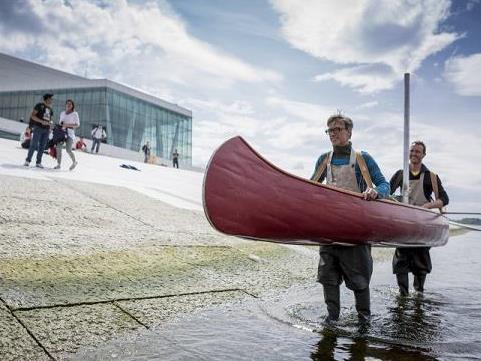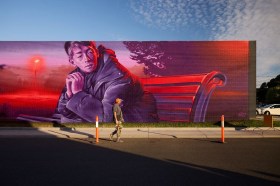Futurefarmers, Flatbread Society, Oslo, 2013. Photo: Max McClure
Ever since public art stepped off the pedestal and started ‘place-making’, artists have been told they should develop work that is responsive to place.
Situations Director, Claire Doherty doesn’t agree. Tired of the banal cookie-cutter art dished up for public locations, she believes the essence of public art is a set of conditions rather than just a place. While place is part of the package the conditions also include the people who frequent the area, the time frames in which it is used and the circumstances surrounding it.
Situations is a British-based arts organisation dedicated to commissioning and producing public art which sees the artist as an agent of change. The approach begins with a with a process of becoming locally embedded first, rather than hoping for that outcome once the object is “plonked”.
‘We begin from a more dynamic understanding of place than a physical site, inviting artists to contribute to the lived experience of a place,’ explained Doherty.
Situations began its story embedded within the University of the West of England in Bristol, and became independent in 2012.
‘We think and reflect on what happens when the spark of an idea is lit by a public artwork, and we bring in unexpected voices to open up that conversation. We share those ideas through dynamic events, websites and blogs, books and workshops,’ Doherty added.
One such publication is Situation’s New Rules of Public Art, which declares the following guidelines for a new approach to public art.
Rule 01: It doesn’t have to look like public art
Today public art can take any form or mode of encounter as Situations celebrate: ‘The days of bronze heroes and roundabout baubles are numbered.’
Think outside the box – create situations that will surprise, delight and engage.
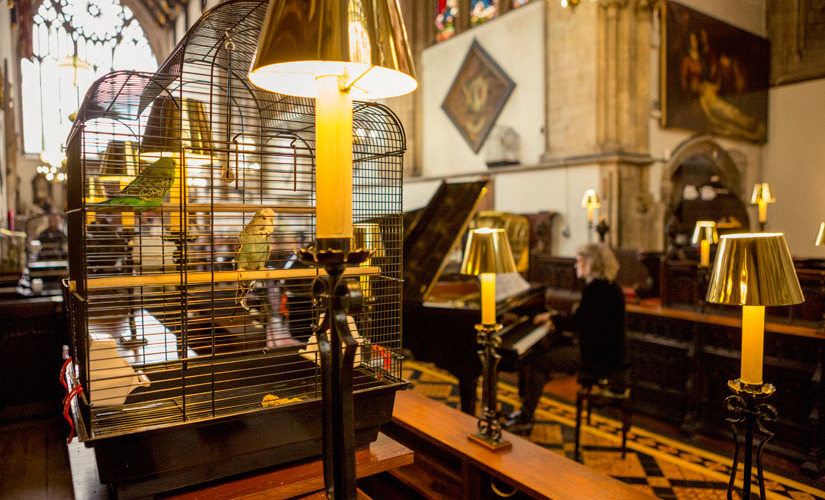
Annika Kahrs brought songbirds into a 13C chapel for a recital of Liszt’s Preaching to the Birds. Image via Situations
Rule 02: It’s not forever
Who said that Public Art must be permanent? ‘Places don’t remain still and unchanged, so why should public art?’ It is a good mantra for the budding Public Art Commissioner to consider.
Rule 03: Create space for the Unplanned
Commissioning public art is not a simple design-and-build-process. Artworks arrive through a series of accidents, failures and experiments. Situations believe that it is these moments of uncertainty and rethinking are the points at which the artwork comes into focus.
Let responses to the artwork unfold over time and be open to the potential for unforeseen things to happen.
Rule 04: Don’t make if for a community. Create a community.
‘Community is rarely born out of geography, but rather out of common purpose.’ It is a good observation and one that artist musician and innovator Brian Eno agrees with: ‘Sometimes the strongest single importance of a work of art is the celebration of some kind of temporary community.’
Be wary of predefining an audience.
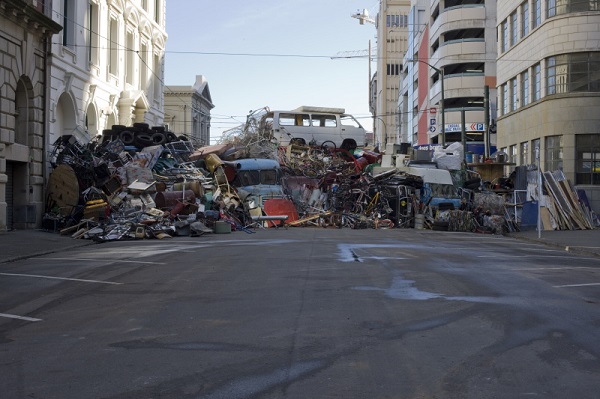
Heather & Ivan Morison, Journée des Barricades, Wellington, 2008. Photo: Steven Rowe
Rule 05: Withdraw from the cultural arms race
Towns and cities across the world are locked into a one-size fits all style of public art. In a culture of globalized brands and clone towns – and especially with the recent implosion of the creation of cultural precincts – we hanker after authentic, distinctive places.
If we are place-making, then let’s make unusual places advises Situations.
Rule 06: Demand more than fireworks
Believe in the quiet, unexpected encounter as much as the magic of the mass spectacle. Transformation often occurs in the solitary moment or the simple shared moment of recognition – these are equally potent and powers public artworks.

Heather & Ivan Morison, Journée des Barricades, Wellington, 2008. Photo: Steven Rowe; source Studio Situation
Rule 07: Don’t embellish, Interrupt
Situations says: ‘Public art is of the people and made with the people, but not always by the people … Trust the artist’s judgment, follow their lead and invest in their process.’
We need smart urban design, uplifting street lighting and landmark buildings, but public art can do so much more than decorate. Interruptions to our surroundings or everyday activities can open our eyes to new possibilities beyond artistic embellishment.
Rule 09: Welcome outsiders
Outsiders challenge our assumptions about what we believe to be true of a place. Embrace the opportunity to see through an outsider’s eyes
Rule 10: Don’t waste time on definitions
Is it sculpture? Is it visual art? Is it performance? Who cares! Don’t waste time on definitions.
There are more interesting questions to ask: Does it shake up your perceptions of the world around you, or your backyard? Do you want to tell someone else about it? Does it make you curious to see more?
Rule 11: Suspend your disbelief
Art gives us the chance to imagine alternative ways of living, to disappear down rabbit holes, to live for a moment in a different world. Local specifics might have been the stepping off point – but public art is not a history lesson. Be prepared that it might not always tell the truth.
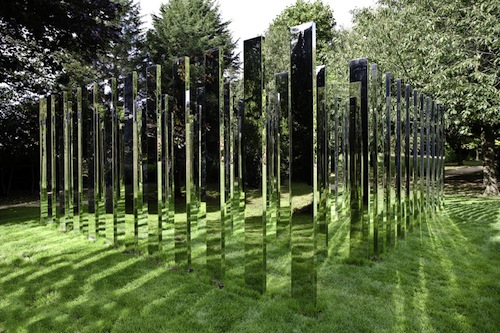
Jeppe Hein, Follow Me, Bristol, 2009. Photo: Jamie Woodley. Courtesy University of Bristol; source Studio Situation
Rule 12: Get Lost
Public art is neither a destination nor a way-finder. Artists encourage us to follow them down unexpected paths as a work unfolds. Surrender the guidebook, get off the art trail, enter the labyrinth and lose yourself in unfamiliar territory.
To learn more about Situations and their public commissions and publications visit www.situations.org.uk